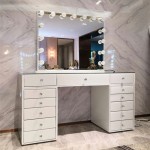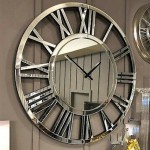Antique Standing Mirror Frame: A Reflection of History and Craftsmanship
Antique standing mirror frames represent more than just reflective surfaces; they are tangible pieces of history, reflecting the styles, craftsmanship, and social contexts of bygone eras. These frames, often elaborately crafted and designed, offer a glimpse into the artistry and decorative sensibilities of past generations. Their presence in a modern setting can elevate a room's aesthetic, adding a touch of timeless elegance and historical significance.
The pursuit of antique standing mirror frames involves understanding the various elements that contribute to their value and authenticity. Factors such as the frame's material, construction techniques, stylistic details, and age all play a crucial role in determining its worth. This understanding empowers collectors and enthusiasts to make informed decisions when acquiring these cherished pieces, ensuring that they are investing in genuine artifacts of historical and artistic value.
Identifying Key Styles and Periods
Recognizing the specific style and period of an antique standing mirror frame is essential for proper identification and valuation. Different eras boast distinct stylistic characteristics, ranging from the ornate carvings of the Baroque period to the simpler, more streamlined lines of the Art Deco movement. Familiarizing oneself with these stylistic nuances allows for a deeper appreciation of the frame's historical context and artistic merit.
Key periods to consider include Victorian, Art Nouveau, Rococo, and Neoclassical, each with its own unique design vocabulary. Victorian frames, for example, often feature elaborate carvings, intricate details, and the use of dark woods like mahogany or walnut. Art Nouveau frames, on the other hand, are characterized by flowing lines, organic motifs, and the incorporation of materials like glass and metal.
Materials and Construction Techniques
The materials used in the construction of antique standing mirror frames contribute significantly to their overall aesthetic and value. Common materials include wood, gesso, plaster, metal, and glass. Different types of wood, such as walnut, mahogany, oak, and pine, were favored during specific periods and influence the frame's appearance and durability.
Construction techniques also vary across different periods and styles. Hand-carving, gilding, and veneering are examples of traditional techniques that showcase the skill and artistry of the craftsmen. Examining the joinery, the application of finishes, and the presence of hand-crafted details can offer valuable clues about the frame's age and authenticity.
Gilding, the application of thin layers of gold leaf, was a popular decorative technique used to enhance the opulence and richness of mirror frames. Different gilding methods, such as water gilding and oil gilding, were employed, and recognizing these techniques can aid in identifying the frame's period and origin.
Conservation and Restoration
Preserving the integrity of antique standing mirror frames is paramount for maintaining their historical and artistic value. Proper conservation methods involve careful cleaning, stabilization of fragile elements, and addressing any damage or deterioration. It is crucial to avoid harsh chemicals or abrasive cleaning techniques that could irreparably damage the frame's surface.
Restoration, on the other hand, involves repairing or replacing damaged components to restore the frame's original appearance and functionality. This process requires specialized skills and knowledge to ensure that the restoration work is carried out sensitively and in accordance with established conservation principles. Consulting with a qualified antique furniture restorer is highly recommended for any significant restoration work.
Understanding the appropriate methods for cleaning and caring for antique mirror frames is essential for their long-term preservation. Regular dusting with a soft brush or cloth, avoiding excessive humidity and direct sunlight, and addressing any signs of damage promptly can help maintain the frame's beauty and integrity for generations to come.
The presence of an antique standing mirror frame in a contemporary setting can serve as a striking focal point, adding a touch of history and elegance to any room. By recognizing the key stylistic features, materials, and construction techniques, one can gain a deeper appreciation for these remarkable pieces of art and history.

Antique French Floor Mirror At Horchow Wall

Decorative Antique Gold Floor Wooden Mirror Frame China Wall Mirrors Made In Com

Rectangle Floor Mirror Antique Full Length

Floor Mirror In French Style Sq0936508 Osman Antique

Florence Antique French Vintage Standing Mirror West Mirrors

Marlena Antique Glass Frame Floor Mirror Pottery Barn

Martin Svensson Home 62 In X 20 Farmhouse Rectangle Framed Antique Black Standing Full Length Floor Mirror 18115 The Depot

Buy Metal Frame Oversized 198cm Floor Mirror Antique Brass Now West Elm Ksa

French Antique Standing Mirror With Gold Wooden Frame And Bow

Floine Wood Standing Mirror Vintage Frame Italy Missing Stand Ruby Lane








